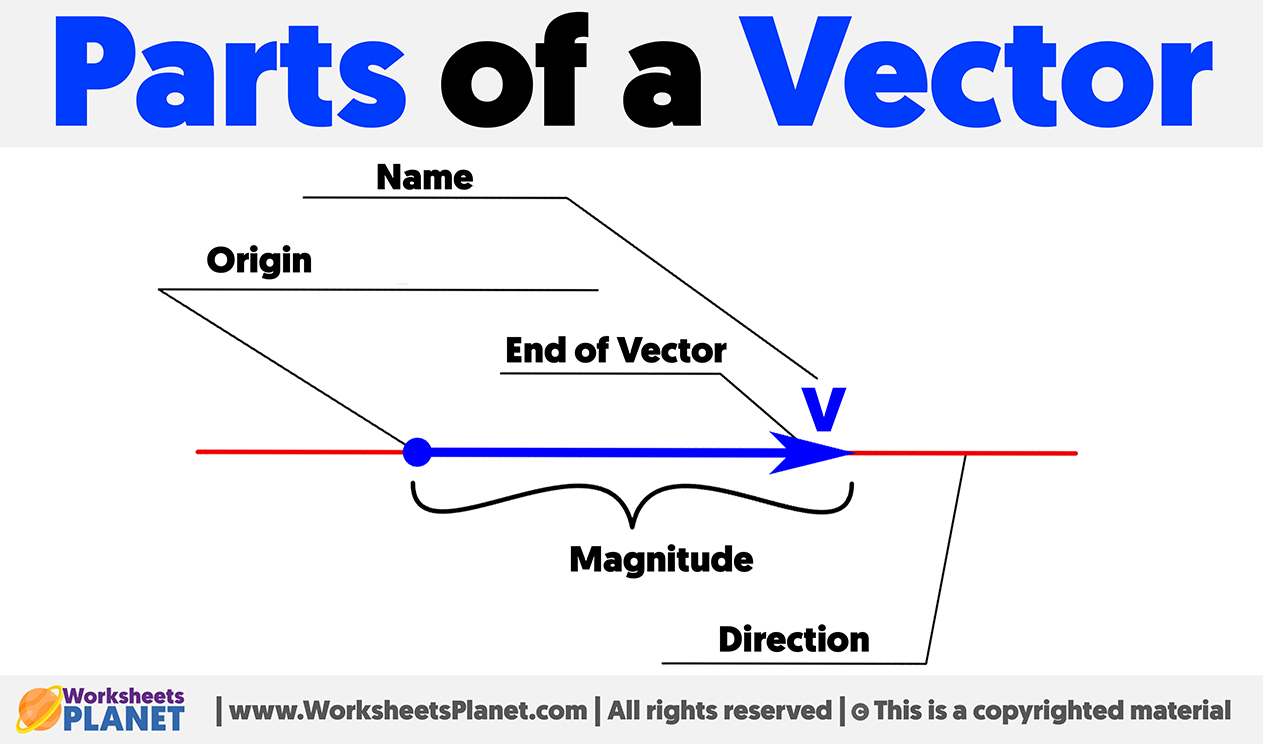A vector is a mathematical quantity that has both magnitude and direction. In three-dimensional space, a vector can be represented by an ordered set of three components. The main parts of a vector include:
Magnitude: The magnitude of a vector, often denoted by ||v|| or |v|, represents the length or size of the vector. It is a scalar value and is always non-negative. The magnitude provides information about the distance or intensity of the vector.
Direction: The direction of a vector indicates the orientation or angle it makes with a reference axis. It is often expressed using angles or direction cosines. Direction provides information about where the vector is pointing in space.
Components: In three-dimensional space, a vector has three components corresponding to its projections onto the x, y, and z axes. For example, if a vector is denoted as V
Initial and Terminal Points: When representing a vector geometrically, the initial point is the starting point of the vector, and the terminal point is the ending point. The vector is the directed line segment from the initial point to the terminal point.


